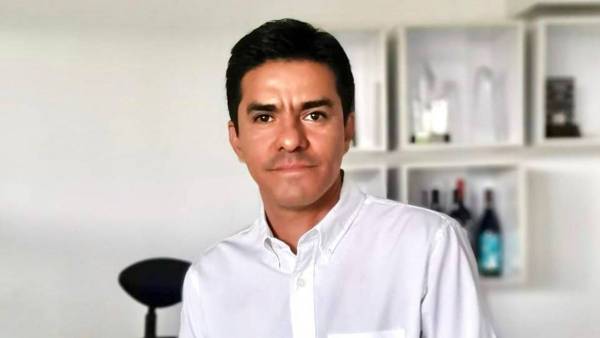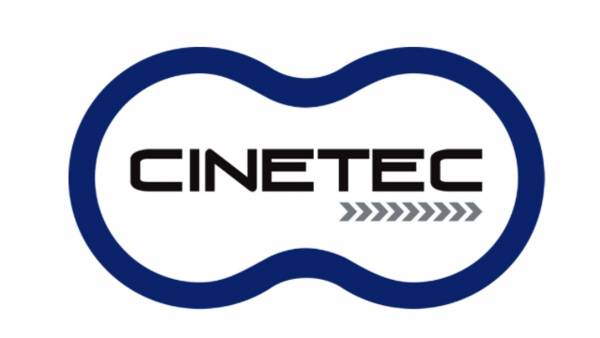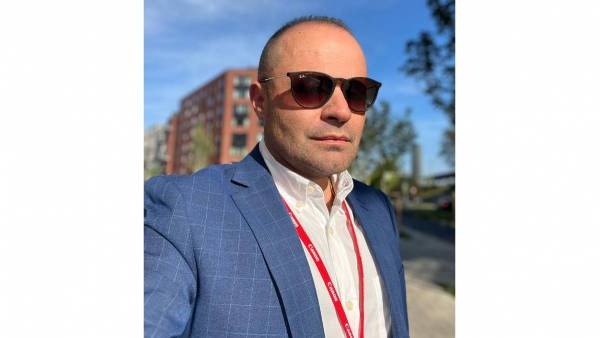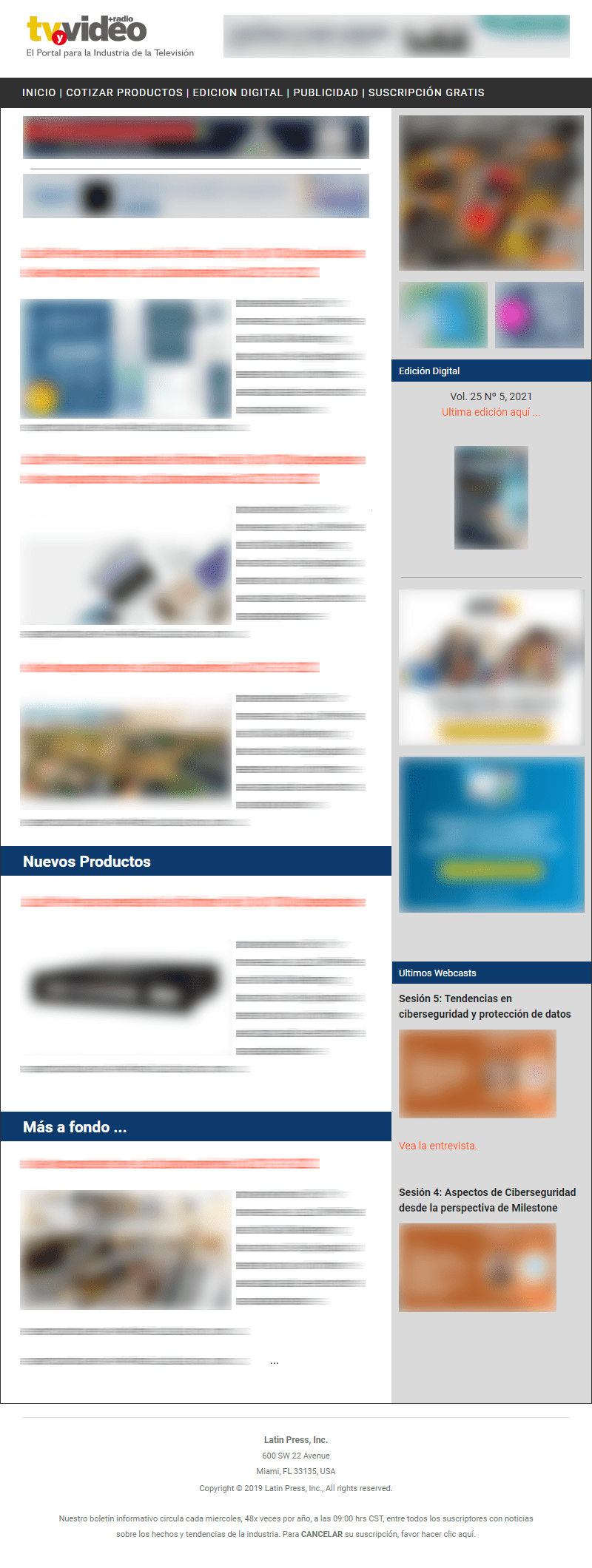 A multiplex strategy that considers that one of the channels is designed for educational purposes should be based on the results of new developments, new combinations and the use of other knowledge acquired.
A multiplex strategy that considers that one of the channels is designed for educational purposes should be based on the results of new developments, new combinations and the use of other knowledge acquired.
By:
Mag. Luis Jorge Orcasitas Pacheco
Mag. Luis Fernando Gutierrez Cano
Since well into the second half of the twentieth century, one of the functions of television has focused on serving as a useful medium for educational processes. The benefits of television as a practical and relatively effective means of supporting teaching-learning processes have been sufficiently proven in several countries around the world, especially for communities with difficulties in accessing "traditional" education.
We cannot forget the experience of educational television and culture in Colombia, at the dawn of the 70s, when educational television programs were established aimed at teaching reading, writing, adding, subtracting, multiplying and dividing millions of Colombians of all ages. But, despite this, specialists in the educational field have identified a couple of factors around television and its educational function: one, that in a way, television "depersonalizes" education; and another, that I was able to configure a passive spectator in front of the message in question.
In this sense, digital television, especially DTT (digital television service open to all types of users), could collapse these paradigms, which at the time were established in the processes of education in analog television.
Likewise, the immense technological possibilities, many of them still to be developed in their entirety, may allow that, in the not too distant future, digital television becomes the tool par excellence for the configuration of innovative educational projects, which contribute and enable better access and appropriation of the medium.
Given this panorama, the focus of this article refers to education (training) as one of the main sections of social innovation, which, obviously, should be promoted especially by developing countries through the identification, promotion and dissemination of innovative projects to promote educational practices that contribute to the full development of academic communities.
Undoubtedly, educational television has a huge mission in meeting these objectives and the role of digital television is key whenever a digital environment allows the creation of interactive applications and the possibility that a channel can be subdivided into multiple subchannels (multiplex) for the transmission of video information for fixed and mobile devices, audio and other data.
Multiplex programming strategy
A multichannel programming is structured depending on the modality on an existing channel, then it is configured around and, derived from this, other offers that take into account the business mission and the programmatic strategy for the creation of a series of channels that configure as a whole an offer that can be varied or specialized according to the established multiplex strategy.
A multiplex programming considers the strategic use of new technologies, the technological reconfiguration, the use and appropriation of the medium by the various users always thinking that the audiovisual content is derived for multiple platforms. It is crucial that a multichannel offer allows the viewer to interact with the TV and receive added services with an attitude of activity towards the TV and other technologies. It is about there being interactions with the environment so that there is the appropriation of the medium.
A multiplex strategy that considers that one of the channels is designed for educational purposes should be based on the results of new developments, new combinations and the use of other acquired knowledge, such as innovation, the development of advanced hardware and software, the acquisition of external knowledge for innovation, training, market innovations and design, production and distribution within processes such as recording (capture), editing, processing, dissemination and reception as graphed below.
At this point it is necessary to study the reception in the constitution of the strategic actions of the public of interest and begin to investigate the configuration of social systems as communication platforms concerned with identity and the construction of meaning in networks within a communicational and educational scheme.
Thinking about changes and implosions
The fact of managers of the change and implosions generated by the incorporation of digital television must consider experimentation and innovation to face a digital environment always incorporating all the living forces of the television station for the agile and effective achievement of the inclusion of new technological tools for the benefit of society and for the development of new social dynamics, economic and technical that makes digital possible and for our topic today education.
New developments in educational digital television should take into account:
- The permanent testing of new educational formats and their impact.
- The way(s) of producing: whether in 4K or 8K.
- Flexible workflow, accessible and capable of exploiting content in a collaborative environment.
- The way to be active on all platforms (computer, tablets and smartphones) and the best way to create innovative products for each of the devices.
- Participation (social TV).
- The big data selected for capture, storage, search, sharing, analysis, and visualization.
Understanding the new student
A multiplex strategy that establishes within its offer an educational channel makes it necessary to understand the new competences and learning styles in the training of teachers and students, in an intercultural context, using interactive digital language, discussing new competences and digital skills in educational activities, highlighting the use of the language of interactive digital video in pedagogical projects. In terms of the multichannel, it is to conceive programming for these purposes supported by cooperation and co-creation agreements for the production of educational material.
In this sense, the creation of a multiplex strategy that accommodates education must take into account the following objectives and how to establish action plans within the company for its deployment and development:
The creation of an educational channel beyond what has been considered educational television with only documentary broadcasts is to open truly formative spaces and clearly consider before putting them on screen, distance education studies, the history, objectives and experiences of distance education or mediated by technology. Also take into account the vision of education and the educator, the profile of the educator, educational methodologies in learning environments, evaluation and educational resources of technology-mediated education.
An educational-oriented channel must establish the methods and techniques of production of educational content for digital television, knowing the technologies; teaching methods and techniques; evaluative practices in the use of new technologies; printed materials, books, encyclopedias, programmes and notebooks: dominant resources; visual and auditory resources; audiovisual resources; technology in education and technology in education: differences and similarities; the use of the computer as a technology; the relationship between the use of technology and learning disabilities.
Educational digital television must include the student with difficulties in the learning process, it must allow meaningful learning environments, it must prepare teachers, content developers, instructional designers against new technologies such as:
Educational television in a digital environment must establish material for digital reading. Also to take advantage of the universe of audiovisual communication as the use of radio as an educational instrument. Internet as the network that covers the entire planet and allows us to be universal from the local. If video is added to television as an educational tool and the internet as a possibility of synchronous and asynchronous interaction, the teaching-learning process can be more significant.
Wait...
In the next installment we will continue to contribute to the topic of educational television by expanding the topic to the possibilities offered by T-learning or Tele education with respect to the interactivity that digital offers and the opportunities to design educational television that generates significant learning environments from the design of linear and non-linear programming for a digital environment.
*Luis Jorge Orcasitas Pacheco is a Social Communicator-Journalist at the Pontifical Bolivarian University. Master in Theory and Practice of Creative Documentary, Autonomous University of Barcelona. Professor of the Faculty of Social Communication-Journalism at the Pontifical Bolivarian University. Professor of the Faculty of Audiovisual Communication, Jaime Isaza Cadavid Polytechnic. Audiovisual director and documentary filmmaker. Member of the Research Group on Urban Communication-GICU, Faculty of Social Communication-Journalism of the Pontifical Bolivarian University.
*Luis Fernando Gutiérrez Cano, Social Journalist communicator from the Pontifical Bolivarian University, specialist in television from the Javeriana University and Master in education from the Tecnológico de Monterrey. University professor, producer, director and television programmer. He received the Emmi Award for the strong support of the special in Sintonía con los niños (Canal Capital), the India Catalina, the Armando Devia Moncaleano and the Amway Award for the best university television programs in the country.

























Leave your comment